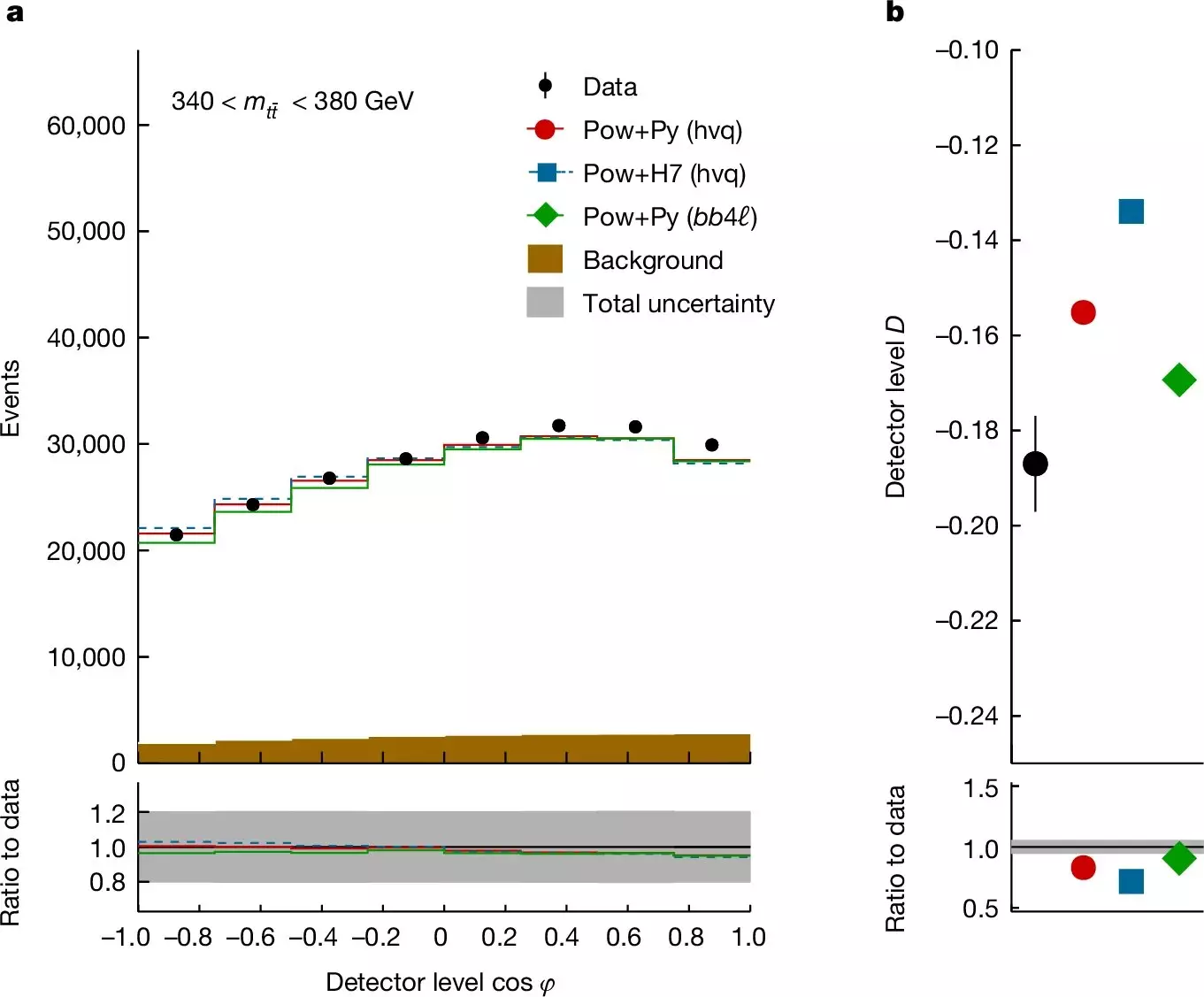Quantum entanglement remains one of the most captivating phenomena in quantum mechanics, where particles become intertwined in such a way that the state of one particle is intrinsically linked to the state of another, regardless of the distance separating them. This concept defies classical physics intuition, which fails to provide an adequate framework for understanding such correlations at a distance. Manifestations of entanglement have emerged in various physical systems, yielding significant implications for fields like quantum cryptography and quantum computing. Despite extensive studies, much of entanglement remains deep in theory, awaiting comprehension and experimental verification, especially at the extreme energies achievable in particle physics experiments.
The field of quantum information has garnered significant attention, culminating in notable experiments that have tested the predictions made by physicist John Bell regarding entangled states. The recognition of Alain Aspect, John F. Clauser, and Anton Zeilinger with the Nobel Prize in Physics in 2022 was a testament to the milestones achieved in this area. Their pioneering experiments, specifically with entangled photons, underscored the foundational aspects of quantum theory. These efforts demystified some complexities surrounding entanglement but also hinted at limitations and gaps in our understanding that called for further exploration, particularly at the high energy frontiers accessible at particle colliders.
Particle colliders like the Large Hadron Collider (LHC) serve as humanity’s most advanced instruments for examining the fundamental particles of nature. Historically, the LHC has primarily focused on discovering new particles and studying the properties of known ones. However, an intriguing opportunity arose with the recent observation of quantum entanglement among fundamental particles called top quarks at unprecedented energy levels. This groundbreaking observation, reported by the ATLAS collaboration in September 2023 and later corroborated by the CMS collaboration, represents a pivotal advancement, capturing the intersection of quantum mechanics and high-energy particle physics.
The top quark, the heaviest known fundamental particle, provides a unique platform for studying quantum entanglement. Its propensity to decay rapidly into other particles typically obscures the direct observation of its quantum states. However, a novel methodology employed by the ATLAS and CMS collaborations involved examining pairs of top quarks produced in proton-proton collisions at an energy level of 13 teraelectronvolts. By carefully selecting pairs of quarks that were produced with low momentum relative to one another, researchers were able to extract meaningful information about the spin entanglement between these quarks, a significant feat in the quantum realm of particle physics.
The experimental observations reported significant correlations, with spin entanglement inferred from the angular separation of decay products emitted by the two top quarks. This approach allowed physicists to overcome inherent challenges linked to the particle’s short-lived nature. The results yielded a remarkable statistical significance exceeding five standard deviations, indicating a reliable detection of quantum entanglement. Moreover, the CMS collaboration expanded these explorations by examining conditions wherein quarks are produced with high momentum relative to one another, creating further insights into the nature of spin entanglement that classical physics could not account for.
The implications of observing quantum entanglement in such a high-energy regime are sprawling, hinting at possible new physics that transcends the Standard Model—a framework that has reliably described particle interactions for decades. Researchers like Andreas Hoecker and Patricia McBride, who are spokespersons for the ATLAS and CMS collaborations, respectively, emphasize the potential to explore uncharted territories of particle physics and the fundamental principles governing matter at these scales. Such insights might not only test existing theories but could also unveil phenomena that could reshape our understanding of the universe.
Conclusion: A New Era of Exploration
The recent advances in observing quantum entanglement among top quarks mark a pivotal moment in both quantum mechanics and particle physics, heralding a new era of exploration. As our capacity to probe the intricate connections between quantum behavior and fundamental forces evolves, the quest to understand the universe at its most fundamental levels continues. The discoveries at the LHC demonstrate the intricate interplay of energy, matter, and information, inviting both skepticism and wonder as physicists navigate the complexities of entanglement. It is only through these explorations that the serene, yet tumultuous, landscape of quantum physics may begin to reveal its secrets.


Leave a Reply